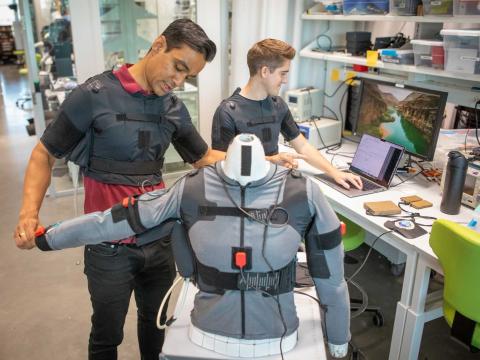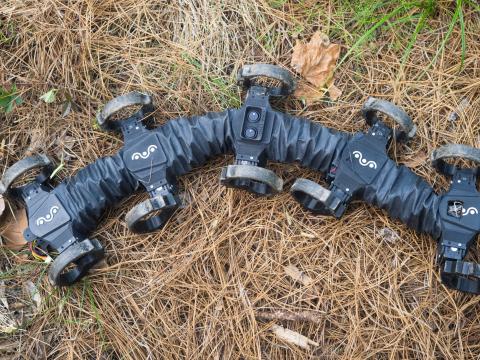Air Force Experiments With AI To Advance the Kill Chain
To help advance the development of a data-driven and automated kill chain, the U.S. Air Force’s 805th Combat Training Squadron, or Shadow Operations Center-Nellis (ShOC-N), completed Experiment 3, a test of human-machine teaming and emerging technologies, June 4-13.
The experiment evaluated workflows from Air Combat Command’s Project NEXUS and integrated several tactical command and control (C2) nodes within a combat-representative scenario, according to Debora Henley, public affairs official for the 505th Command and Control Wing.
“Experiment 3 is a clear example of what happens when we put warfighters in the loop early—at the point where concepts meet code,” said Lt. Col. Shawn Finney, 805th CTS/ShOC-N commander. “We’re not just testing software, we’re challenging assumptions, validating tactics and shaping the operational architecture the Air Force and our allies will rely on in future conflicts. This was a proving ground for the kill chain of tomorrow.”
Experiment 3’s approach, inspired by the U.S. Air Force Warfare Center’s Bamboo Eagle exercise series, enabled realistic stress testing of emerging technologies in a combat-representative environment, allowing tactical-level participants to test tools and workflows to accelerate the kill chain.
Of the tools and technologies tested, the Maven Smart System’s artificial intelligence (AI)-enabled application, which offered “real-time recommendations to dynamic targeting teams, enabling side-by-side comparisons between AI-suggested and operator-derived courses of action without reliance on the AI tool” stood out, Henley shared.
“Our goal was to measure how the machine could support, not replace, the human in the decision loop,” said Capt. Abby Brown, 805th CTS/ShOC-N Experiment 3 lead planner. “We scaled the scenario to focus less on quantity and more on the accuracy of recommendations.”
Teams of observers documented the results of using the AI application to help further refine AI algorithms that support C2 operations, Henley said.
Air Combat Command’s Project NEXUS was also stress-tested during Experiment 3 to help create a survivable and fully integrated operational C2, intelligence, surveillance and reconnaissance, and targeting capability designed to generate effects at speed and scale. The ShOC-N enabled two geographically separated intelligence teams using different tools to feed data into a shared pipeline for the first time, according to Henley.
“Replicating a combat-representative simulated environment becomes more difficult as new warfighting methodologies, TTPs [tactics, techniques and procedures], and technologies emerge,” said Lt. Col. Wesley Schultz, 805th CTS/ShOC-N director of operations. “This experiment was instrumental in forecasting the realism needed for future experiments, and we expect continued improvements in future experiments and our culminating capstone event.”
Experiment 3 is a clear example of what happens when we put warfighters in the loop early—at the point where concepts meet code.
Stakeholders from Air Combat Command, the U.S. Air Force Warfare Center and other defense organizations had the chance to observe hands-on technology showcases and provide feedback during the experiment, Henley said. Industry partners demonstrated remote collaborative operations center; intelligence, surveillance and reconnaissance strategy and planning automation tools; and dynamic mission replanning and refueling tools over four days in live synthetic environments to be assessed for potential acquisition.
According to Henley, Experiment 3 generated the most user observations in the ShOC-N’s history, and insights from the event will be compiled into a quick-look summary and full after-action report for Air Combat Command and Air Force leadership.
“The experiment’s influence is already shaping future planning,” Finney said. “Tools and processes validated during this event are being considered for Bamboo Eagle 25-3 and potentially Project Convergence as we mature joint and coalition C2 constructs.”
The ShOC-N will continue its 2025 experimentation series with a fourth event in late summer and a capstone in the fall, which will bring validated technologies and coalition partners together for a comprehensive kill chain exercise.




Comments